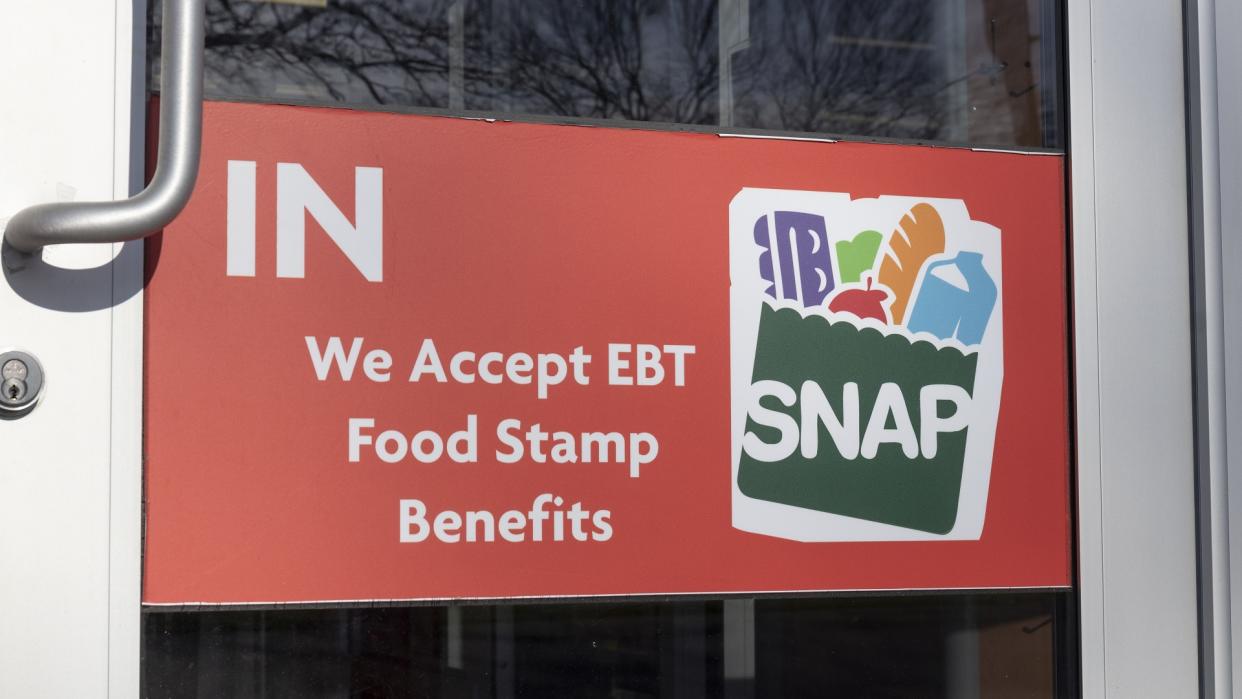Food Stamps: What To Know About SNAP Payments in April

More than 41 million Americans receive crucial Supplemental Nutrition Assistance Program (SNAP) payments for their families.
SNAP payments (formerly known as food stamps) are based on family income. The minimum requirement changes from year to year based on inflation and other factors.
See: 7 States Considering More Stimulus Checks in 2023
Find Out: How To Build a Financial Plan From Zero
Since March 1, pandemic emergency allotments of SNAP have been suspended. Those allotments were based on household size. Now to qualify, your income must meet these three stipulations:
Gross monthly income per family must be at or below 130% of the poverty line.
Net income must be at or below the poverty line.
Families without a member who has a disability or who is 60 or older must have assets of $2,750 or less, and families with such a member must have assets of $4,250 or less.
Items covered by SNAP include kitchen staples such as fruits and vegetables, meat, poultry and fish, dairy products, breads and cereals, snack foods and non-alcoholic beverages, and seeds and plants. SNAP does not cover alcoholic beverages, tobacco products, vitamins, medicines, supplements, live animals, pet foods, cleaning supplies, paper products or cosmetics.
To apply for SNAP, you can visit your state’s local SNAP office or apply online.
The April payment schedule follows the same as March. The cadence depends on your state or territory, and sometimes other factors, like your name. You can check with the Providers website to see exactly when your payment will come through.
Reduce SNAP Payments Are Hurting Many
The reduction in SNAP payments has really hit home, especially in the midst of inflation. Food is up 8.5% year-over-year as of March, according to the U.S. Bureau of Labor Statistics.
The slashing of pandemic emergency allotments brought down payments by about $82 on average, though some families saw a reduction of more than $250. Elderly people have seen pretty dramatic declines in payments, with those who qualify for the minimum seeing their benefits drop from $281 per month to just $23.
The states affected were Alabama, California, Colorado, Connecticut, Delaware, Hawaii, Illinois, Kansas, Louisiana, Maine, Maryland, Massachusetts, Michigan, Minnesota, Nevada, New Hampshire, New Jersey, New Mexico, New York, North Carolina, Ohio, Oklahoma, Oregon, Pennsylvania, Rhode Island, Texas, Utah, Vermont, Virginia, Washington, West Virginia and Wisconsin. In addition, benefits ended in the District of Columbia, Guam and the U.S. Virgin Islands. All other states had already stopped dispersing the benefits.
The amount families receive now basically comes out to $6 per person per day. These sums below reflect the estimated average benefits families were receiving before the pandemic and will be the likely 2023 benefits moving forward. Here’s what that will look like on average based on how large the household is.
Household Size | Estimated Monthly Benefit |
|---|---|
1 | $195 |
2 | $359 |
3 | $577 |
4 | $684 |
5 | $818 |
6 | $1,011 |
7 | $1,048 |
8 | $1,150 |
Each additional person | $211 |
Take Our Poll: What Do You Plan To Use Your Tax Refund For?
About SNAP in Massachusetts
Some good news: Those who qualify for SNAP in Massachusetts received their first state-funded extra payments on April 7. The benefits will be available at the beginning of April, May and June for the prior month. So, those eligible for SNAP in March will receive the extra SNAP in early April.
The payment will come out to 40% of the difference between a family’s maximum benefit for the household size and their regular monthly benefit. The minimum payment is $38 a month.
Also, Massachusetts families who receive SNAP benefits can automatically participate in the Healthy Incentives Program (HIP). HIP deposits money back to an EBT card when SNAP is used to buy local fruits and vegetables from HIP farm vendors, up to $40, $60 or $80 a month depending on household size.
CalFresh and More
Other SNAP recipients got some extra cash as well. Some people in California received an extra deposit of $20.01 on their Electronic Benefit Transfer (EBT) cards. The extra cash was part of an annual “heat and eat” benefit for some CalFresh (California’s name for SNAP benefits) recipients who qualified for heating assistance under the Low Income Home Energy Assistance Program (LIHEAP). For these beneficiaries, the state adds the $20.01 cash benefit to the EBT card as a separate deposit, which can be used to buy non-food items or withdrawn as cash.
If you’re wondering where consumers with SNAP benefits are shopping, the store with the highest exposure to SNAP is Grocery Outlet, followed by BJ’s Wholesale, then Dollar General.
More From GOBankingRates
This article originally appeared on GOBankingRates.com: Food Stamps: What To Know About SNAP Payments in April
